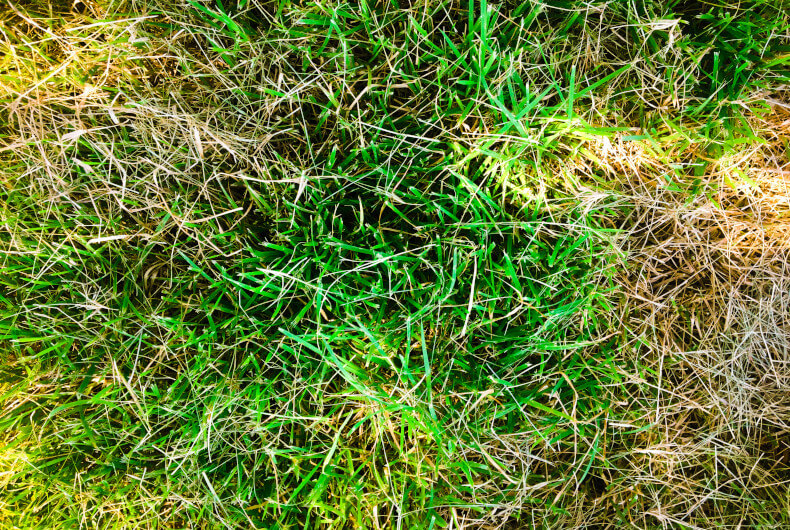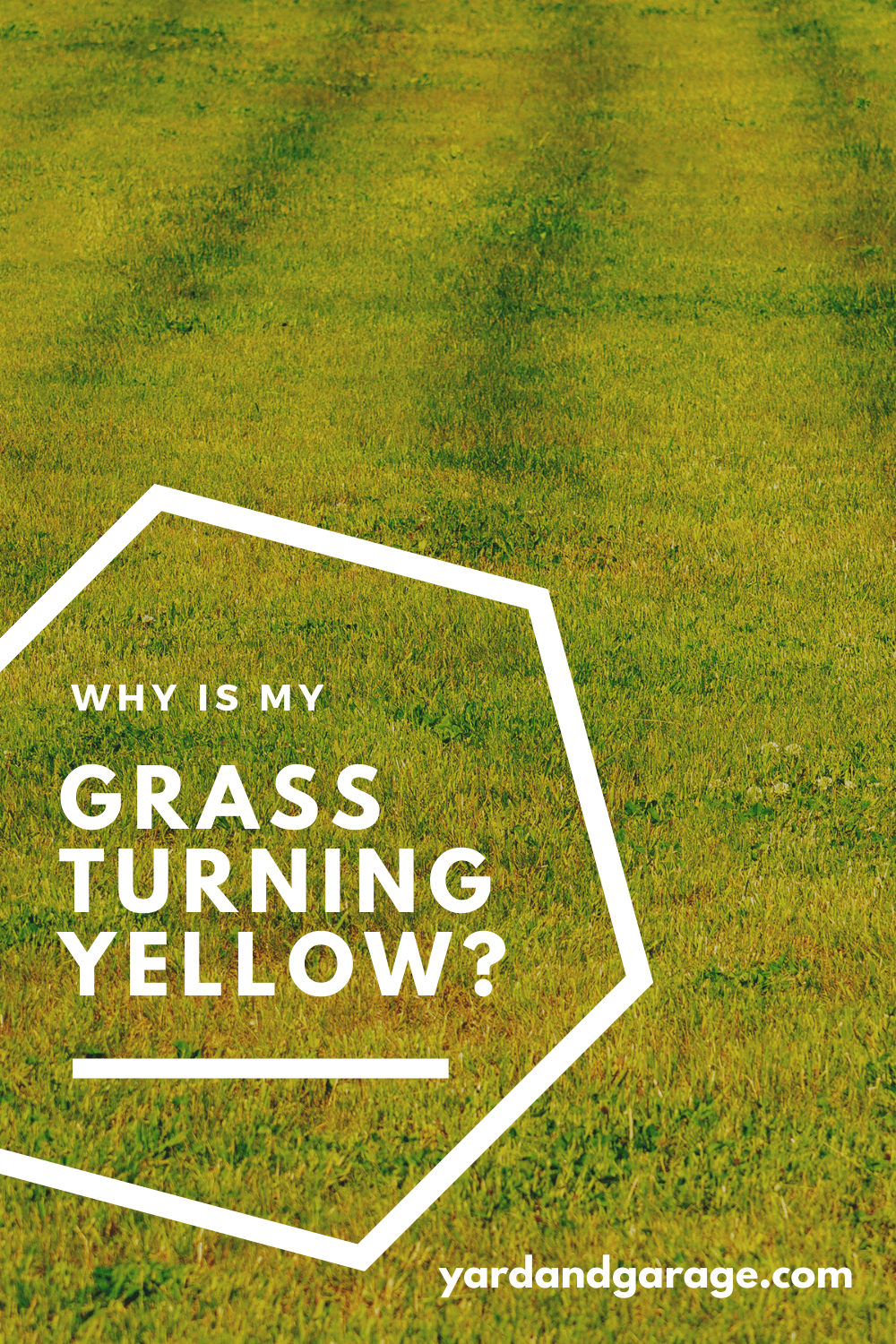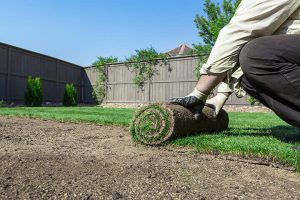 Green grass sometimes turns yellow for several reasons. The most common is improper fertilizing, a deficiency of nutrients in the soil, and an infestation of insects.
Green grass sometimes turns yellow for several reasons. The most common is improper fertilizing, a deficiency of nutrients in the soil, and an infestation of insects.
Yellow grass degrades the overall appearance of your home, so it is essential to restore the aesthetic appeal of your lawn.
Table of Contents
Common Yellow Lawn Problems and How to Fix Them
As stated earlier, there is a multitude of reasons why your grass might be turning yellow. But don’t despair; having your grass turn yellow is rarely a terminal issue.
You can restore the grass to its original green state if intervention is done early enough to stop the issue before it can deteriorate further.
Corrective measures and a consistent approach to taking proper care of your lawn will bring it back to a lush, green state that will appeal to everyone in your home.
Water: Overwatering & Underwatering
When you over-water your lawn, the essential nutrients are washed out, causing your grass to be deficient in the crucial elements for its growth. As such, it is left malnourished and looking yellow.
In other cases, uneven irrigation and very little water will lead to the formation of dry yellow spots in your lawn where the grass is not receiving any water.
The ideal time to water your lawn should be when the two uppermost inches of soil have gotten dry.
Additionally, schedule a few deep watering sessions each week compared to many watering sessions that are too shallow to irrigate the grass properly.
Fertilization Issues
Yellow lawns can also be caused by using the wrong fertilizer or a lack of nitrogen in the soil. If your grass starts slowing its growth, it most likely lacks the critical nitrogen in the ground. With the use of a slow-release fertilizer, you will ensure that the soil has enough nitrogen.
The choice of fertilizer you use will depend on the type of grass, the current growing season, and the appearance of the grass. Spring and fall are the main seasons to fertilize your lawn, but you can form your custom schedule depending on the type of grass growing on your property.
Another solution to the nitrogen deficiency in your soil would be leaving grass clippings in your lawn when you mow the lawn.
Lawn Dormancy
And then maybe, just maybe, your grass is taking a breather. But, unfortunately, temperature and weather changes can cause your grass to go dormant and thereby lose that healthy green look.
If this is the situation with your lawn, consider a cool-season grass that can be used for your warm-season lawns to provide a balance during the growing season.
The warm-season grass usually starts turning yellow whenever there is a drop in temperature. However, adding cool-season grass causes the yellow lawn to stop since the grass can retain its green color even as winter approaches.
Lawn Diseases
In case your grass starts showing signs of yellow striping your grass might be suffering from iron chlorosis. The yellow appearance might be due to a lack of iron, and places that have concrete nearby or alkaline soil will show this symptom.
In most cases, the veins of the grass will remain green, but the grass blades will start turning yellow. Iron supplements are available if this is the case.
Dog Urine Burns
Urination by your pets could be the other reason for your lawn turning yellow. The urine might cause the yellow spots, and this can be remedied by hosing down these areas. The urine is effectively washed away, and this helps to manage the yellow appearance.
At times, the best solution for a yellow lawn is to remove the patches of yellow grass and replant them.
Sometimes, a heat source could be the reason for the yellowing. A chemical spill will require that you replant the grass and when you do, remember to add compost and fresh soil to the patch for the best growth of the new grass.
Grubs and Other Pests
Pests and grubs underneath the soil could also be eating away at the grass stems ad causing the structure above to dry up and take on a yellow appearance. With proper use of pesticides on your grass lawn, you will quickly get rid of the pests.
The application of fertilizer will also achieve the same effect as the faster growth will compensate for the damage caused by the grubs, insects, and pests.
Soil Compaction
Believe it or not, the density of your soil can also be a contributor to yellow grass. When the soil is compacted, the ability of grass to absorb oxygen, water, and other nutrients is significantly impacted.
To improve pore space in your soil, invest in an aerator. Then, when the soil is moist, make multiple passes over the affected area so that you have at least 10 holes per square foot of lawn.
Use a rake to break up the clumps of dirt, and then apply some grass seed with a thin layer of compost. Once the lawn grows back, make sure to aerate as needed.
Frequently Asked Questions
Q: Can yellow grass turn green again?
A: Yellow grass can turn green unless the yellowing was a result of a chemical spill. You can reverse other causes of yellowing and restore your lawn to its lush, green appearance.
With the proper kind of care and supplementing your soil, your grass will be able to get the nutrients it needs. Subsequently, it will be able to restore its appearance and healthy, strong state.
Q: What is the best fertilizer for yellow grass?
A: Organic fertilizers are the best choice for your lawn. They improve the soil’s ability to retain water and improve the quality of your soil.
You can also add nitrogen naturally to your lawn soil by applying poultry manure or a commercial lawn fertilizer with a higher nitrogen ratio to other nutrients.
With this in place, you will improve the soil nitrogen content, and the yellow grass will get the nutrients that it so much needs.
Q: Why is my grass turning yellow in summer?
A: During the summer, there are massive heatwaves, and the temperatures are also very high. These factors can cause your grass to become scorched, which does not mean that your grass is burned.
It is still alive since the heat has not damaged the roots, but the grass might appear yellow. One of the best countermeasures for this heat in the summer is watering your grass to counter the heat.
Run the sprinklers long enough to get the soil around the deepest roots wet.
Conclusion
Has your perfectly green lawn started getting tainted by yellow patches and spots all over? There are several reasons for the yellow appearance, such as scorching by the sun, heat stress, and excess nitrogen.
Nitrogen deficiency is also a cause for a yellow lawn. However, it can be countered by the correct measure of good fertilizer.
Soil compaction and pests have also been known to inhibit the spread and growth of the grassroots, limiting the grass’s growth.
It is possible to restore the green appearance of your lawn if you have better drainage, fertilize correctly and only mow your lawn when the grass is dry.



